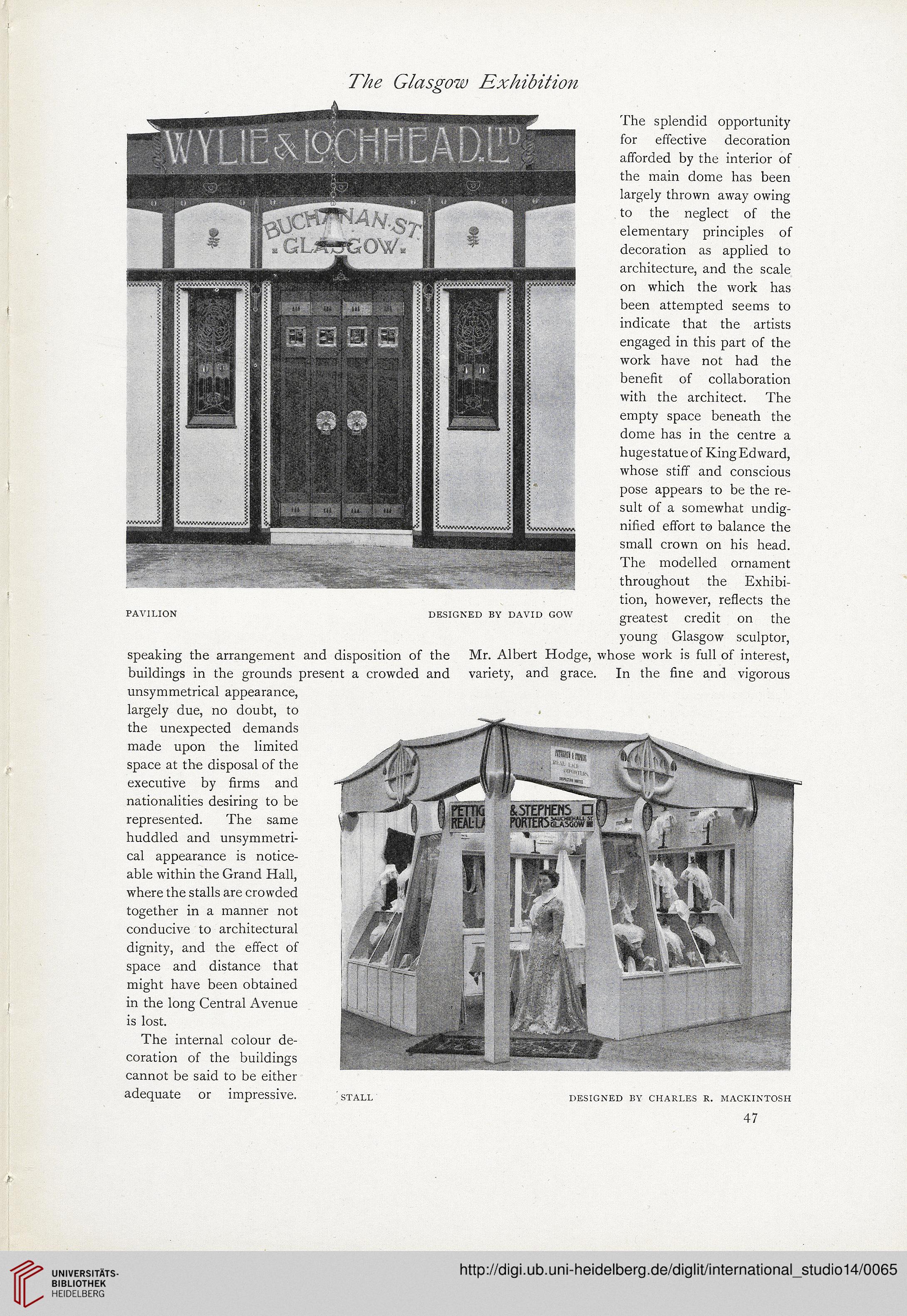The Glasgow Exhibition
speaking the arrangement and disposition of
buildings in the grounds present a crowded
unsymmetrical appearance,
largely due, no doubt, to
the unexpected demands
made upon the limited
space at the disposal of the
executive by firms and
nationalities desiring to be
represented. The same
huddled and unsymmetri-
cal appearance is notice-
able within the Grand Hall,
where the stalls are crowded
together in a manner not
conducive to architectural
dignity, and the effect of
space and distance that
might have been obtained
in the long Central Avenue
is lost.
The internal colour de-
coration of the buildings
cannot be said to be either
adequate or impressive.
The splendid opportunity
for effective decoration
afforded by the interior of
the main dome has been
largely thrown away owing
to the neglect of the
elementary principles of
decoration as applied to
architecture, and the scale
on which the work has
been attempted seems to
indicate that the artists
engaged in this part of the
work have not had the
benefit of collaboration
with the architect. The
empty space beneath the
dome has in the centre a
hugestatueof King Edward,
whose stiff and conscious
pose appears to be the re-
sult of a somewhat undig-
nified effort to balance the
small crown on his head.
The modelled ornament
throughout the Exhibi-
tion, however, reflects the
greatest credit on the
young Glasgow sculptor,
the Mr. Albert Hodge, whose work is full of interest,
and variety, and grace. In the fine and vigorous
DESIGNED BY DAVID GOW
I GLswGOW,
msuwMuw
DESIGNED BY CHARLES R. MACKINTOSH
47
speaking the arrangement and disposition of
buildings in the grounds present a crowded
unsymmetrical appearance,
largely due, no doubt, to
the unexpected demands
made upon the limited
space at the disposal of the
executive by firms and
nationalities desiring to be
represented. The same
huddled and unsymmetri-
cal appearance is notice-
able within the Grand Hall,
where the stalls are crowded
together in a manner not
conducive to architectural
dignity, and the effect of
space and distance that
might have been obtained
in the long Central Avenue
is lost.
The internal colour de-
coration of the buildings
cannot be said to be either
adequate or impressive.
The splendid opportunity
for effective decoration
afforded by the interior of
the main dome has been
largely thrown away owing
to the neglect of the
elementary principles of
decoration as applied to
architecture, and the scale
on which the work has
been attempted seems to
indicate that the artists
engaged in this part of the
work have not had the
benefit of collaboration
with the architect. The
empty space beneath the
dome has in the centre a
hugestatueof King Edward,
whose stiff and conscious
pose appears to be the re-
sult of a somewhat undig-
nified effort to balance the
small crown on his head.
The modelled ornament
throughout the Exhibi-
tion, however, reflects the
greatest credit on the
young Glasgow sculptor,
the Mr. Albert Hodge, whose work is full of interest,
and variety, and grace. In the fine and vigorous
DESIGNED BY DAVID GOW
I GLswGOW,
msuwMuw
DESIGNED BY CHARLES R. MACKINTOSH
47




